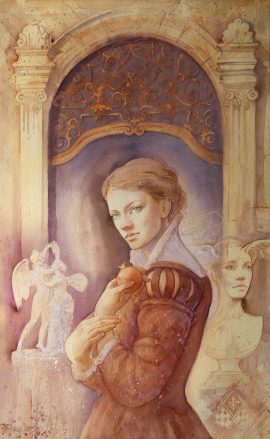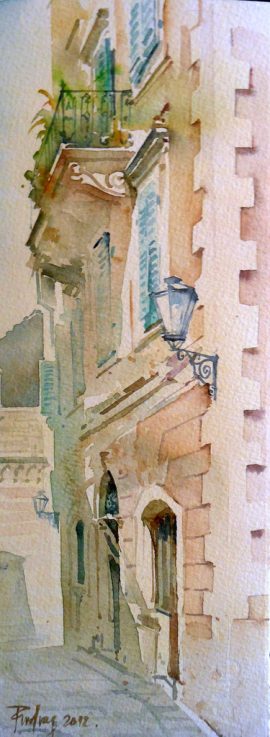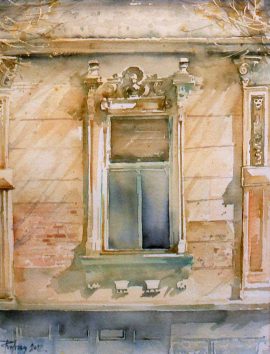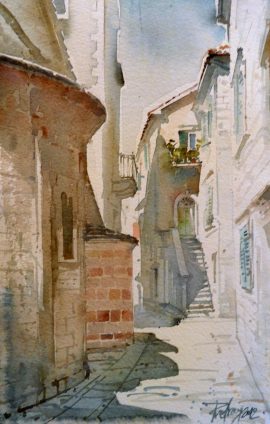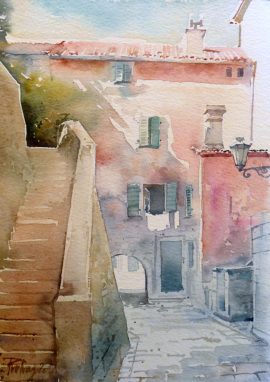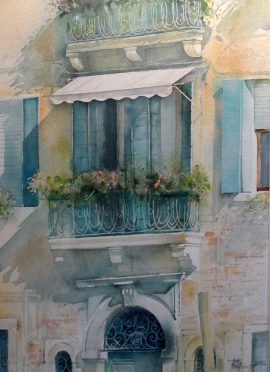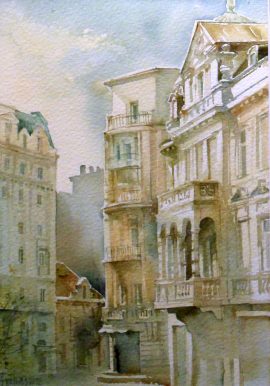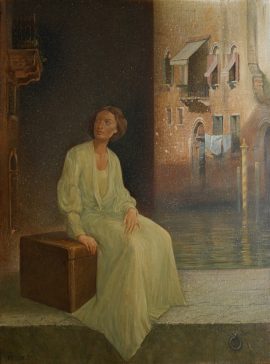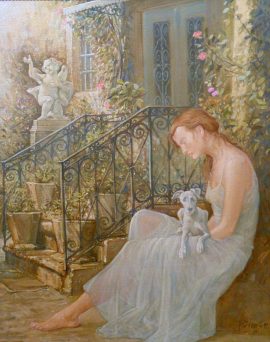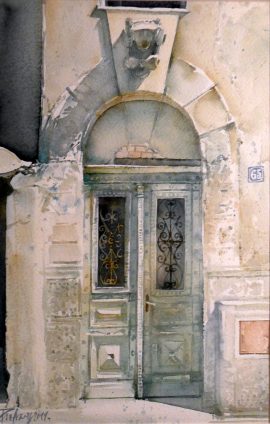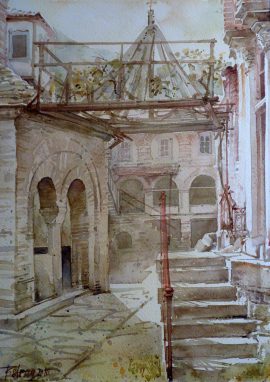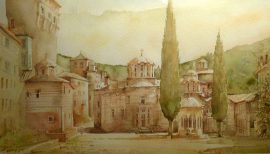Pedja Milosevic was born in Zemun, Belgrade, in 1960. He graduated from the Academy of Applied Arts, Department of painting, in 1985 and since then, painting has been his profession, and he has held exhibitions both in Serbia and abroad. He lived in Spain from 1992 to 1996. He is currently residing in Belgrade, the city which is, often and with pleasure, the subject of his paintings.
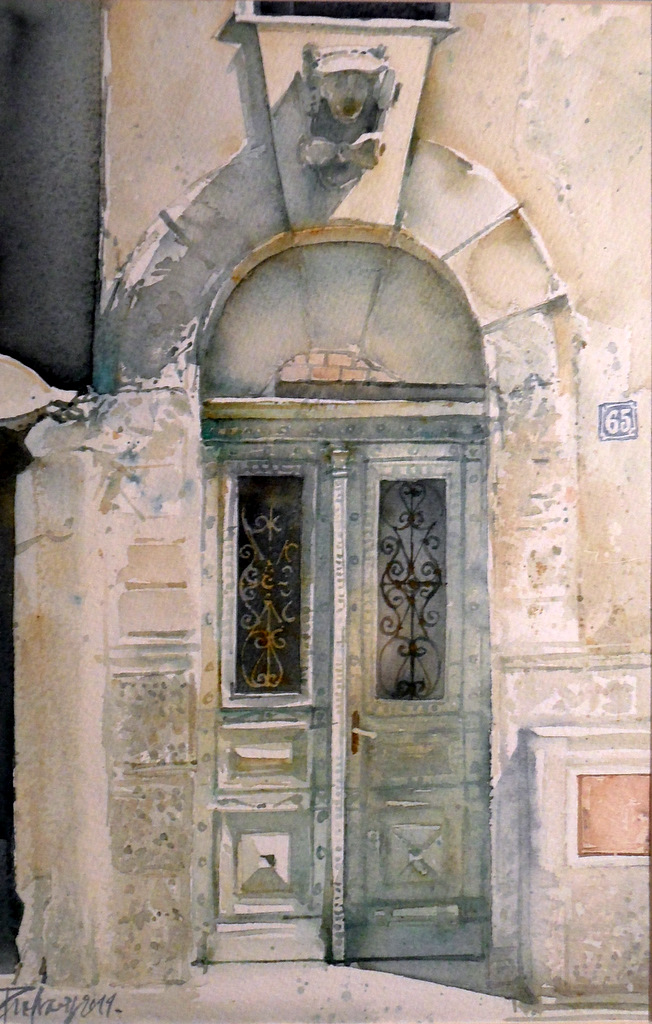 Milosevic is an artist working in refined watercolours and tender, romantic oil paintings. His watercolour paintings strike the observer with their precision – there is no free diffusion and overflowing in his works, which so characteristic for watercolour technique. Each detail is presented with precision in its natural aspect, and yet the painting is far from a mere imitation of photography – it has its own freshness and beauty.
Milosevic is an artist working in refined watercolours and tender, romantic oil paintings. His watercolour paintings strike the observer with their precision – there is no free diffusion and overflowing in his works, which so characteristic for watercolour technique. Each detail is presented with precision in its natural aspect, and yet the painting is far from a mere imitation of photography – it has its own freshness and beauty.
Belgrade motifs, and those of other cities as well, are in the center of this artist’s attention and he draws from the most interesting details of the city, such as famous old buildings, church domes, stairways, old gates, passages, ports, etc. The landscapes he did at the Serbian monastery Hilandar in Greece are particularly interesting, with their sense of dignity and holy peace. Each of his watercolour paintings has a characteristic tone and colour. The colours are not too extravagant and the paintings, with their predominantly brown, bluish or discretely green tones, are almost monochromatic.
Aside from architectural motifs, Pedja Milosevic also does watercolour paintings of the human figure. Interestingly, as much as he tends to be accurate and precise in his architectural subjects, when it comes to portraits and the human figure, the paintings are rich with symbols and allegories. The characters of his imagination, literary characters, portraits of famous painters – in his paintings they hold small mysterious chests, renaissance music instruments, they raise their glasses of wine to u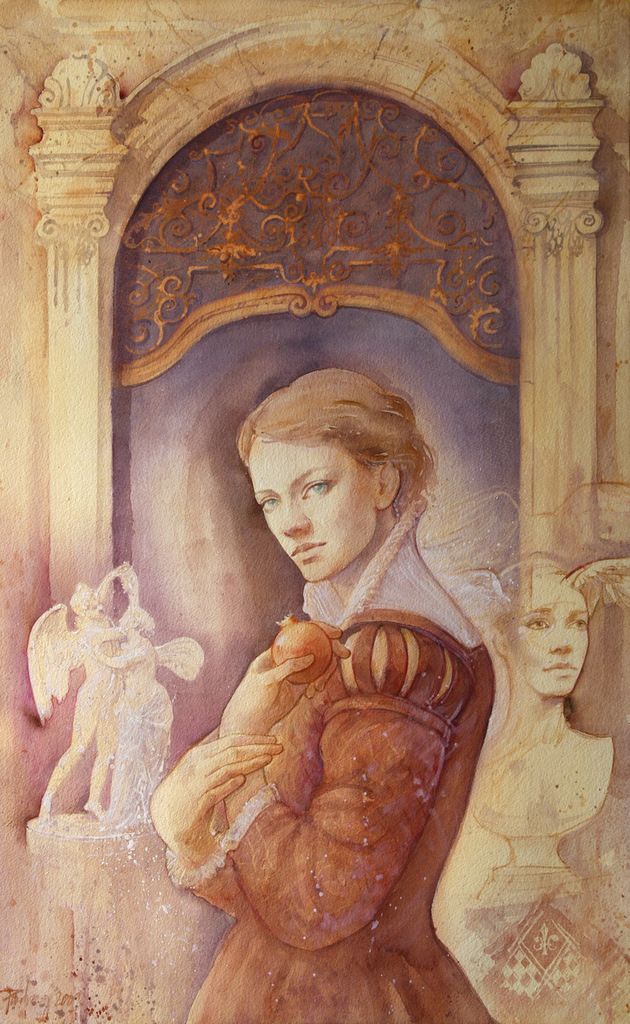 s – in surroundings that seem to have emerged from another dimension.
s – in surroundings that seem to have emerged from another dimension.
Oil painting is also an important part of this artist’s opus. Here, he is completely and absolutely a romanticist. We can see a strong influence of Renaissance and Baroque painting in his art. Milosevic skilfully combines his subjects, mostly female, with the atmosphere and the ambient of those times. His love and fascination with Vermeer, Leonardo and other painters of that time is decisive in his selection of motifs. Lonely ladies with lutes or harpsichords in surroundings which, with their drapes, light and secrecy make us think of the great Vermeer, are Milosevic’s central motif. Alongside these figures we often see Amors with wings, birds bringing messages of love or imaginary figures of their beaus. Again, just like in watercolour paintings, the colours are quiet, single-toned, often in warm reddish-brown nuances. And such colours, like no others, contribute to the impression and the atmosphere of the Old Masters.
Considered separately or as a whole, both the watercolour and oil paintings of Pedja Milosevic are a uniquely pleasant experience for the observer. His story carries us easily to another, long-gone time of romanticism and serenity, the time which all of us intimately miss.
